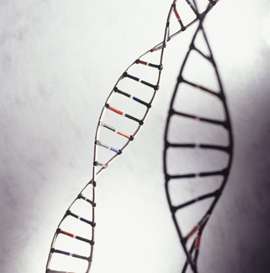Collisions during DNA replication and transcription contribute to mutagenesis

When a cell makes copies of DNA and translates its genetic code into proteins at the same time, the molecular machinery that carries on replication and the one that transcribes the DNA to the mRNA code move along the same DNA double strand as their respective processes take place. Sometimes replication and transcription proceed on the same direction, but sometimes the processes are in a collision course. Researchers at Baylor College of Medicine and the University of Wisconsin have determined that these collisions can significantly contribute to mutagenesis. Their results appear today in Nature.
"We first developed a laboratory assay that would allow us to detect a wide range of mutations in a specific gene in the bacteria Bacillus subtilis," said corresponding author Dr. Jue D. Wang, who was an associate professor of molecular & human genetics at Baylor when a portion of the work was completed and is currently with the University of Wisconsin, Madison. "In some bacteria, we introduced the gene so the processes of replication and transcription would proceed on the same direction. In other bacteria the gene was engineered so the processes would collide head-on."
The researchers discovered that when replication and transcription were oriented toward a head-on collision path the mutation rate was higher than when their paths followed the same direction. Furthermore, most of the mutations caused by replication transcription conflicts were either insertions/deletions or substitutions in the promoter region of the gene, the region that controls gene expression.
"People have mostly been looking at mutations in the DNA sequence that codes for protein, but in this paper we found that the promoter, the regulatory element of gene expression, is very susceptible to mutagenesis," said Wang, "and this susceptibility is facilitated by head-on transcription and DNA replication."
Promoters control how much of a gene is transcribed; for instance, particular mutations in promoters may enhance or reduce the production of proteins, or silence them completely. These genetic changes in gene expression may affect an organism's health.
"The mutation mechanism we identified is not just applicable to our experimental system, but can potentially contribute to mutations that alter gene expression in a genome-wide scale, from bacteria to humans," said Wang.
More information: T. Sabari Sankar et al, The nature of mutations induced by replication–transcription collisions, Nature (2016). DOI: 10.1038/nature18316
Journal information: Nature
Provided by Baylor College of Medicine



















